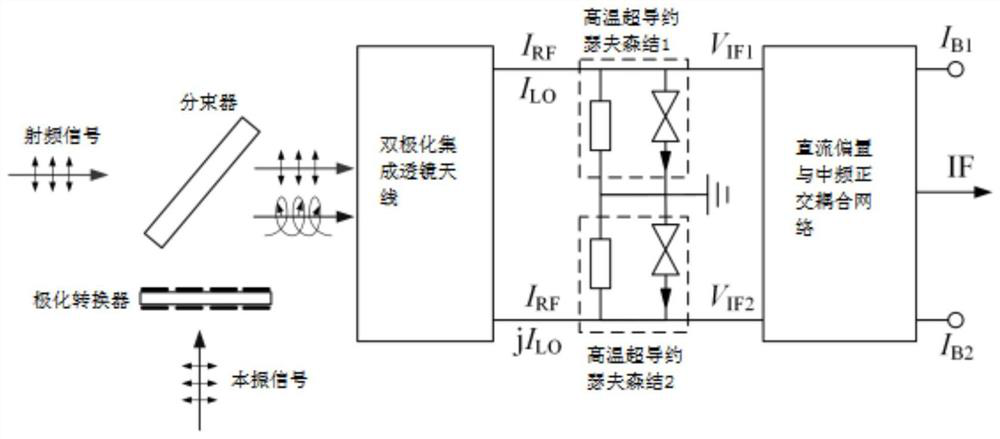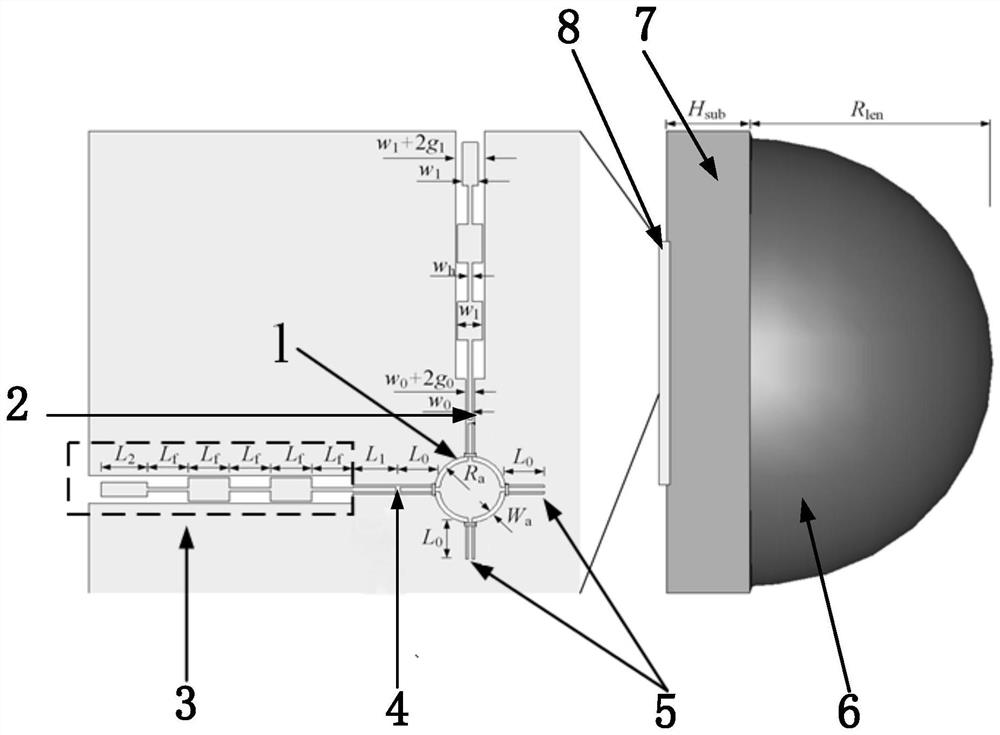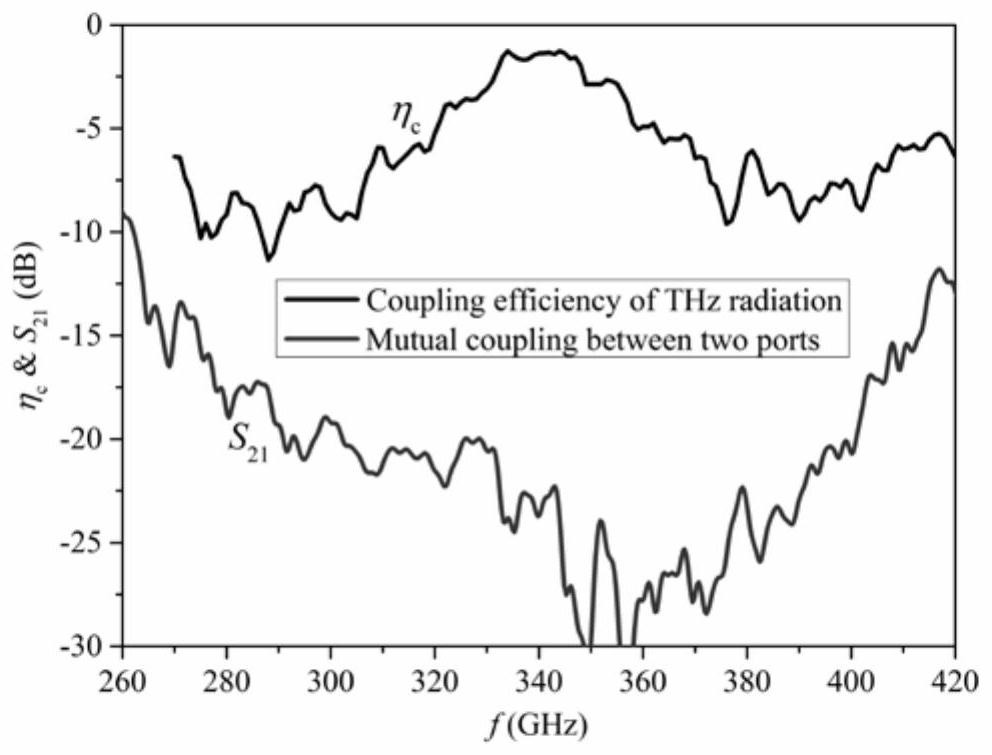High-temperature superconducting image rejection modeling method based on polarization regulation and correction network
A high-temperature superconducting, image suppression technology, applied in the direction of improving frequency converters, can solve the problems of high-temperature superconducting terahertz receiver modeling that has never been proposed, the difficulty of increasing the circuit due to radio frequency propagation loss, and low impedance characteristics. Low Power Requirement, Ease of Implementation, Effect of High Frequency Cap
- Summary
- Abstract
- Description
- Claims
- Application Information
AI Technical Summary
Problems solved by technology
Method used
Image
Examples
Embodiment 1
[0068] In this embodiment, a polarization-regulated terahertz hybrid circuit is designed, and the design method corresponds to step 1 of the content of the invention, such as figure 1 As shown, it includes a polarization converter, a beam splitter and a dual-polarized integrated lens antenna fed by two high-temperature superconducting Josephson junctions. The specific structure of the antenna is as follows figure 2 As shown, during specific implementation, a high-resistivity silicon lens 6 is installed on one end of the MgO substrate 7, and the surface of the other end is a gold film 8. There is an annular slit antenna 1 on the gold film 8, and the annular slit antenna 1 is connected to the radio frequency signal It has good pattern gain and radiation efficiency with the local oscillator signal. There are two ports 2 and 4 at the clockwise 90° and 180° positions of the circular slot antenna 1 and the corresponding coplanar waveguide is the circular slot antenna 1 Feed, the tw...
Embodiment 2
[0073] In this embodiment, a single-chip high-temperature superconducting image suppression receiver circuit is designed, and the design method corresponds to step 2 of the content of the invention, including a bias tee network and an intermediate frequency orthogonal coupling network, such as Figure 6 As shown, two bias tee networks 10 are designed on the gold film 8, each network has three ports, one end is connected to the fifth-order choke filter 3 of the polarization-regulated terahertz hybrid circuit, and the other end is used for high-temperature ultra- Conductor Josephson junctions 2 and 4 provide DC bias (the port has an intermediate frequency choke filter), and one end is connected to the intermediate frequency quadrature coupling network; the intermediate frequency quadrature coupling network is a two-node branch line connected to a 50Ω lumped resistance at the end A coupler, a 100nF lumped capacitor 9 is designed between the network and the bias tee network to sepa...
Embodiment 3
[0077] The method of the present invention provides a powerful tool for the mixing analysis and performance prediction of the high-temperature superconducting image-suppressing receiver for the modeling principle of the high-temperature superconducting image-suppressing receiver, and the specific derivation process is as follows:
[0078] Step 3.2 According to the equivalent circuit of the model and the principle of electromagnetic field, the noise temperature T of the high-temperature superconducting image suppression receiver is derived rec and conversion gain G rec The analytical expression of , specifically includes the following sub-steps:
[0079] Step 3.2.1 Establish a virtual radio frequency signal voltage source V rfs1 and V rfs2 The proportional relationship, the virtual local oscillator signal voltage source V los1 and V los2 proportional relationship;
[0080] Step 3.2.2 Based on the nonlinear relationship of the high-temperature superconducting Josephson junc...
PUM
 Login to View More
Login to View More Abstract
Description
Claims
Application Information
 Login to View More
Login to View More - R&D
- Intellectual Property
- Life Sciences
- Materials
- Tech Scout
- Unparalleled Data Quality
- Higher Quality Content
- 60% Fewer Hallucinations
Browse by: Latest US Patents, China's latest patents, Technical Efficacy Thesaurus, Application Domain, Technology Topic, Popular Technical Reports.
© 2025 PatSnap. All rights reserved.Legal|Privacy policy|Modern Slavery Act Transparency Statement|Sitemap|About US| Contact US: help@patsnap.com



